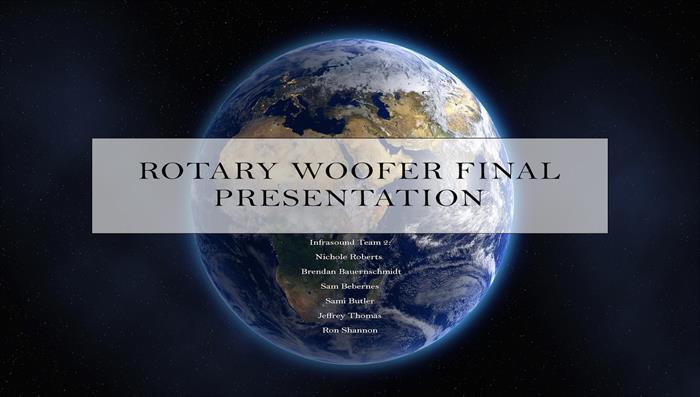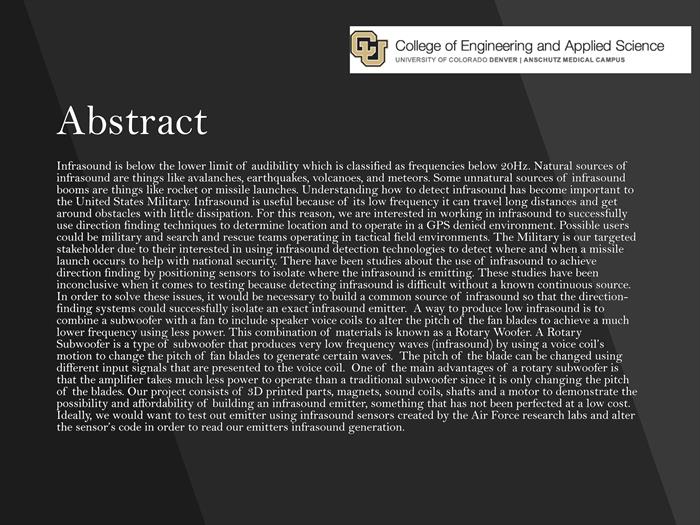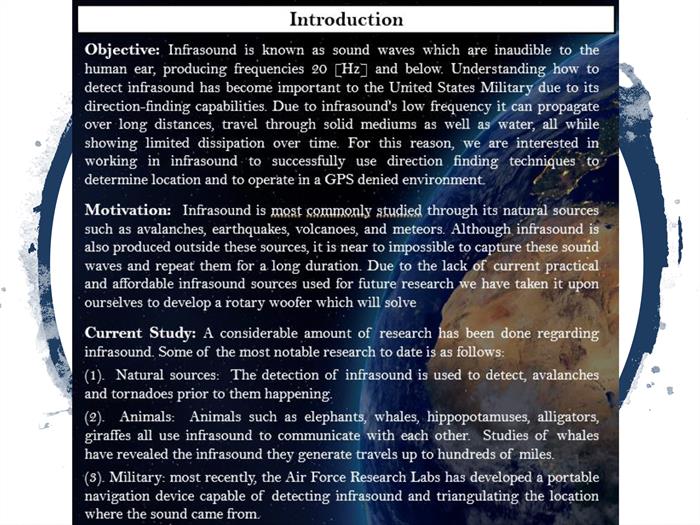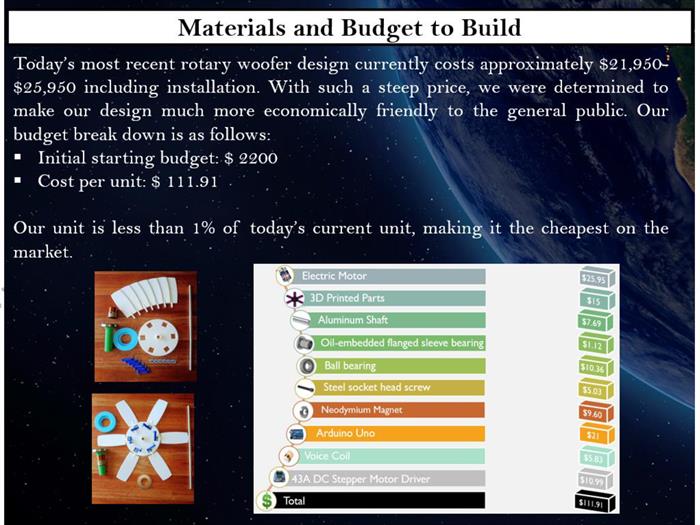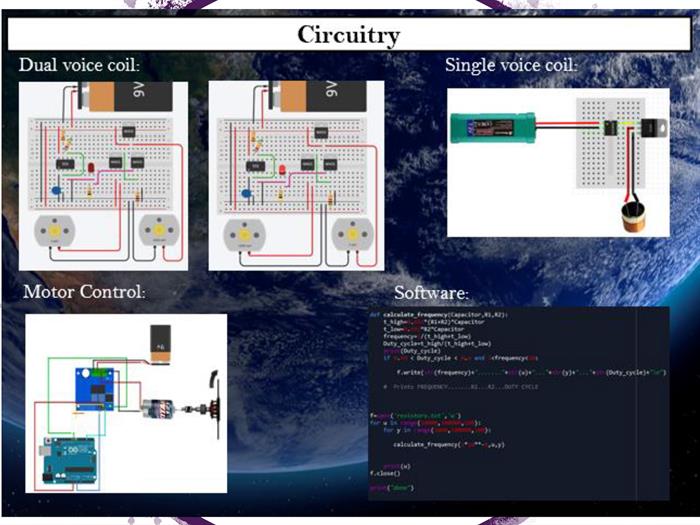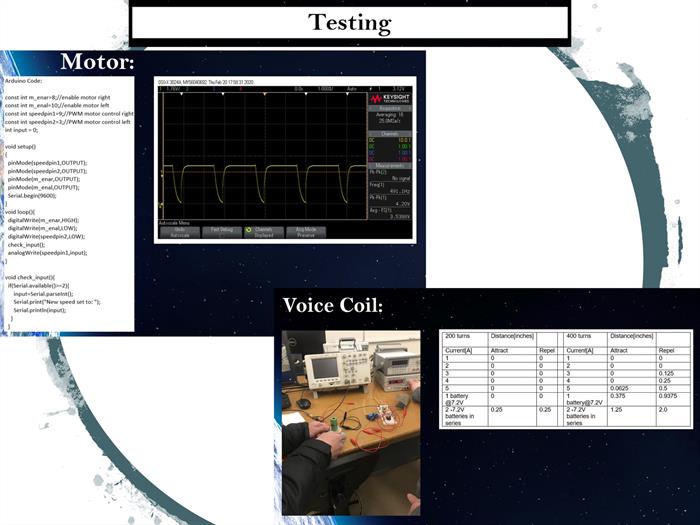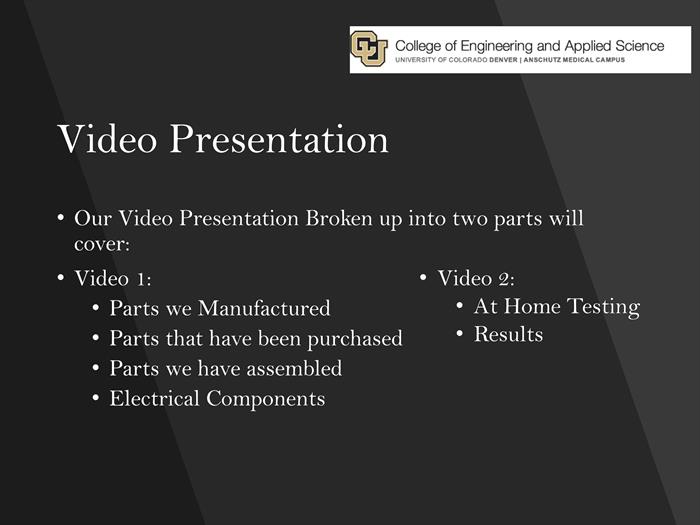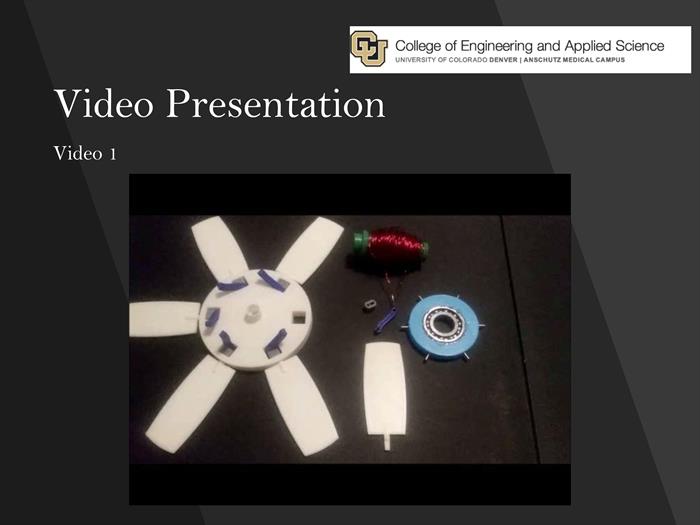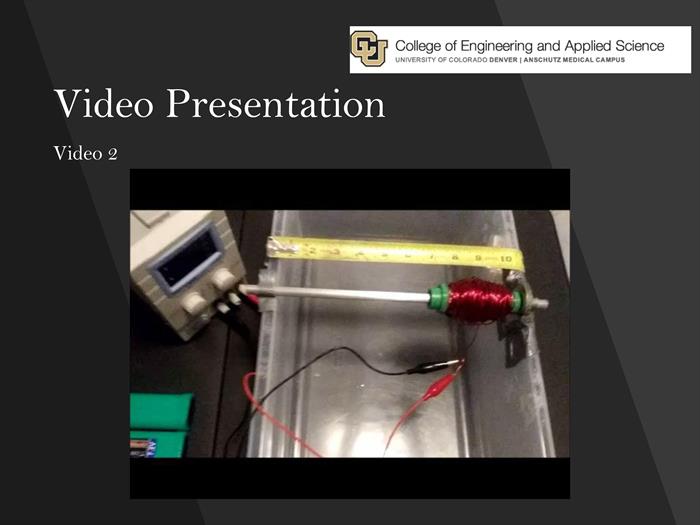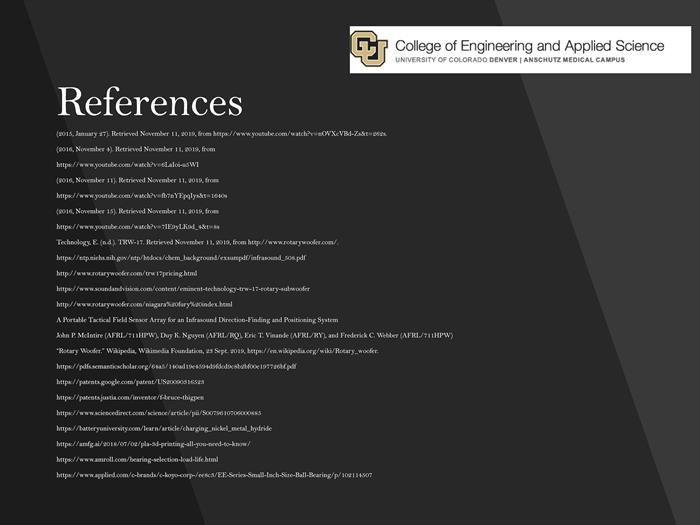Rotary Woofer
Department of Electrical Engineering
Project Abstract
Infrasound is below the lower limit of audibility which is classified as frequencies below 20Hz. Natural sources of infrasound are things like avalanches, earthquakes, volcanoes, and meteors. Some unnatural sources of infrasound booms are things like rocket or missile launches. Understanding how to detect infrasound has become important to the United States Military. Infrasound is useful because of its low frequency it can travel long distances and get around obstacles with little dissipation. For this reason, we are interested in working in infrasound to successfully use direction finding techniques to determine location and to operate in a GPS denied environment. Possible users could be military and search and rescue teams operating in tactical field environments. The Military is our targeted stakeholder due to their interest in using infrasound detection technologies to detect where and when a missile launch occurs to help with national security. There have been studies about the use of infrasound to achieve direction finding by positioning sensors to isolate where the infrasound is emitting. These studies have been inconclusive when it comes to testing because detecting infrasound is difficult without a known and continuous source. In order to solve these issues, it’s necessary to build a common source of infrasound so that the direction-finding systems could successfully isolate an exact infrasound emitter. One way to produce low infrasound is to combine a subwoofer with a fan to include speaker voice coils to alter the pitch of the fan blades to achieve a much lower frequency using less power. This combination of materials is known as a Rotary Woofer. A Rotary Subwoofer is a type of subwoofer that produces very low frequency waves (infrasound) by using a voice coil’s motion to change the pitch of fan blades to generate certain waves. One of the main advantages of a rotary subwoofer is that the amplifier takes much less power to operate than a traditional subwoofer since it is only changing the pitch of the blades. Our project consists of 3D printed parts, magnets, sound coils, shafts and a motor to demonstrate the possibility and affordability of building an infrasound emitter, something that has not been perfected at a low cost. Ideally, we would want to test out emitter using infrasound sensors created by the Air Force research labs and alter the sensor’s code in order to read our emitters infrasound generation.
